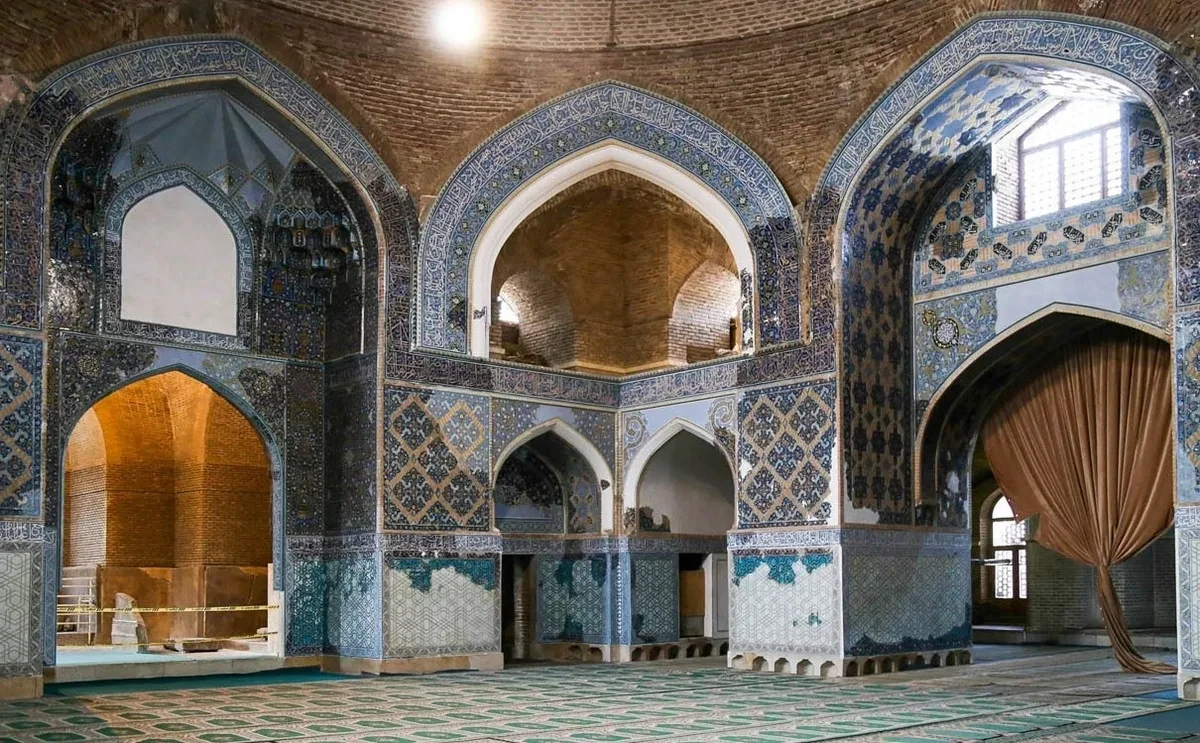The Tabriz Blue Mosque, also known as the Jahan Shah Mosque, is a stunning example of Islamic architecture and tilework. Located in the city of Tabriz, Iran, the mosque is one of the most important historical and cultural sites in the region. It was built in the 15th century during the reign of Jahan Shah, a ruler of the Kara Koyunlu dynasty.
Architecture and tilework
The Tabriz Blue Mosque is a prime example of Islamic architecture, featuring intricate tilework, soaring arches, and a large central dome. The mosque’s facade is decorated with blue tiles, which give the mosque its name. The tiles are arranged in an intricate geometric pattern, which creates a stunning visual effect.
The mosque has a large courtyard surrounded by a series of smaller domes and arches. The central dome is supported by four massive pillars, which are adorned with intricate tilework and calligraphic inscriptions. The interior of the mosque is equally stunning, featuring a variety of decorative elements, including tilework, plasterwork, and mosaics.
The tile work in the Tabriz Blue Mosque is particularly noteworthy. The blue tiles used on the mosque’s facade are a distinctive feature of the mosque and are arranged in a variety of geometric patterns, including stars, hexagons, and triangles. The patterns are created by arranging tiles of different shapes and sizes, which are then fitted together like a puzzle.
The calligraphic inscriptions on the mosque’s pillars and walls are also a masterpiece of tilework. The inscriptions are written in Arabic script and are arranged in a variety of geometric patterns. The tiles used for the inscriptions are often different in color and texture from the surrounding tiles, making them stand out and adding to the overall beauty of the mosque.
The reason behind its name
The Tabriz Blue Mosque is called the Blue Mosque because of the predominant use of blue tiles in its decoration. The blue color was chosen because it is associated with the sky and heaven in Islamic art and architecture. Blue is also a symbol of purity, clarity, and spirituality in Islamic culture. The blue tiles used in the mosque’s decoration are made using various techniques, including underglaze painting, overglaze painting, and relief work.
Take part in our guided tours to Tabriz Blue Mosque, providing you a nice visit with a deeper understanding of this mosque’s history and architecture.
Restoration
Over the centuries, the Tabriz Blue Mosque has undergone several rounds of restoration and renovation. The mosque suffered damage during several earthquakes and was partially destroyed during the Russo-Persian War in the 19th century. However, it has been restored several times, including a major restoration project in the 1970s.
The restoration work has focused on preserving the mosque’s original beauty and craftsmanship, while also ensuring its structural integrity. The tilework has been carefully cleaned and repaired, and new tiles have been added where necessary. The restoration work has helped to ensure that the Tabriz Blue Mosque remains a stunning example of Islamic architecture and tilework for future generations to enjoy.
Visit the Tabriz Blue Mosque
The Tabriz Blue Mosque is a true masterpiece of Islamic architecture and tilework. Its intricate patterns and stunning colors are a testament to the skill and craftsmanship of the architects and craftsmen who built it. The mosque’s tilework is particularly noteworthy, with its intricate geometric patterns and calligraphic inscriptions. The mosque is a must-visit destination for anyone interested in Islamic art and architecture, and a testament to the rich cultural heritage of Iran. The predominant use of blue tiles in the mosque’s decoration and its association with the sky and heaven in Islamic culture is what gives it its name, the Blue Mosque.
Let us know your ideas and comments about this mosque in the comment box below, we will be happy to hear from you!





















